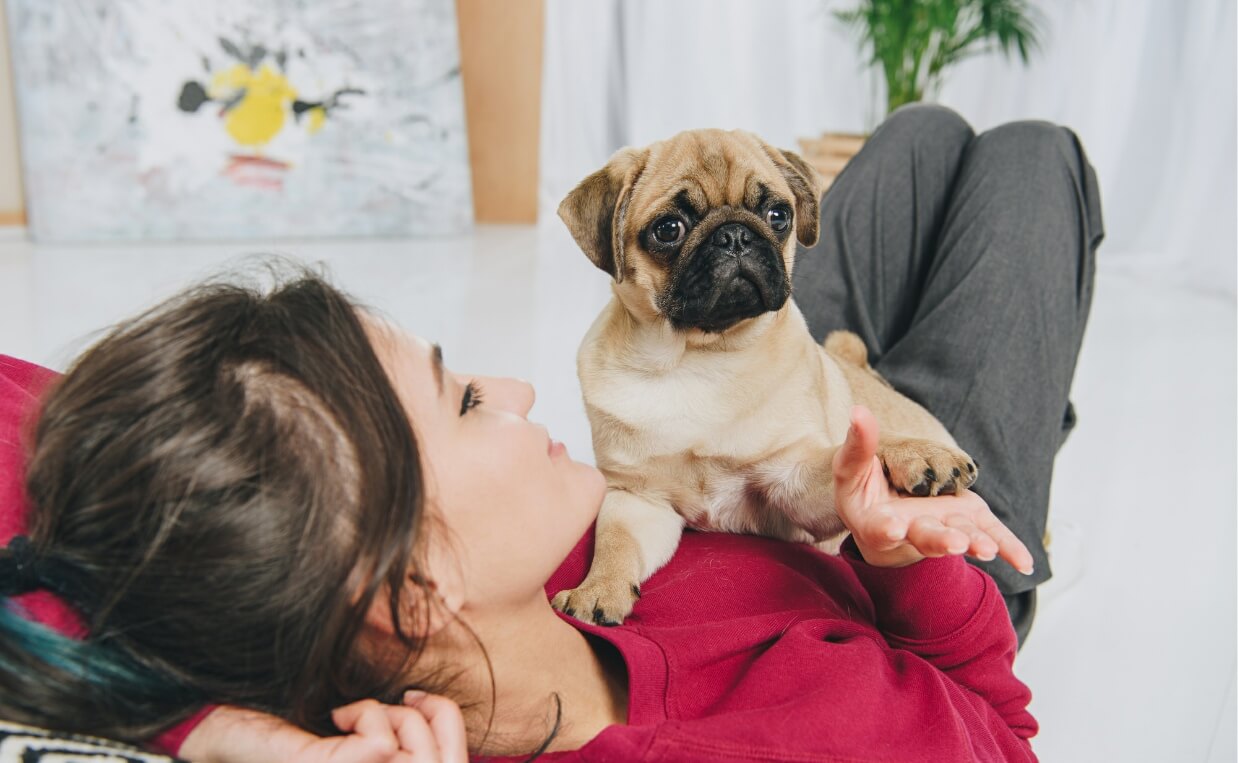
As a new puppy parent, you are most likely spending a lot of time training your puppy. You want to set your puppy up to be successful with good behavior, but things don’t always go the way you planned.
In today’s blog post, I’m going to discuss four puppy training rules that will change your life for the better. These rules are the kind of rules you can apply to every command and skill you work on with your puppy. Providing clear and consistent direction for your pup will speed up the training process. It’s also going to help your pup be more motivated to work with you.
These simple tips have helped many new puppy parents, and they will help you too! These tips are easy to follow and you will quickly see results. You’ll be amazed at how much these tips will help you with your puppy training!
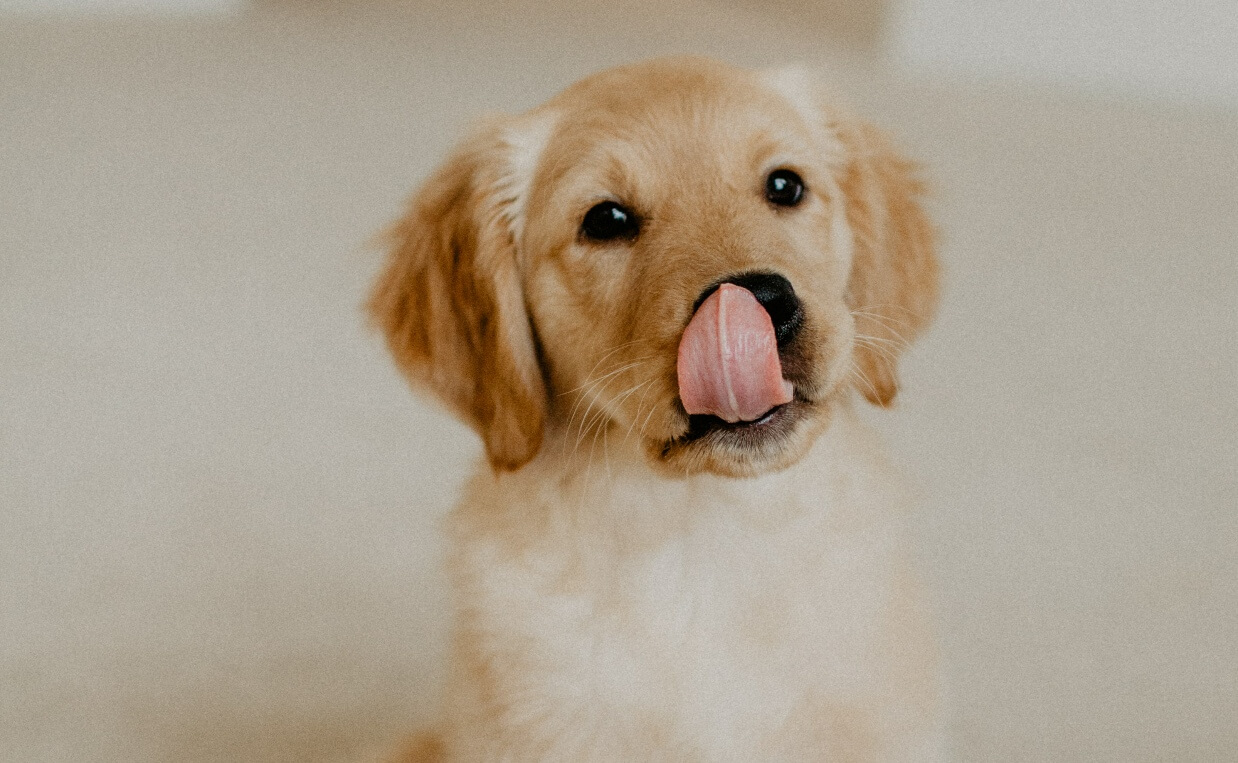
Puppy Training Rule #1. Don’t overwhelm your puppy with too many challenges
This is a common mistake of new puppy parents. Your goal is to help your puppy be successful, and if you try to teach too many things at once or put your puppy into situations where he or she is not ready, you are setting your puppy up for confusion and yourself up for having to deal with undesirable behavior.
For example, don’t try to take your puppy for a walk at the park in the first few days you bring your pup home. While going for walks in the park will one day be a fun, special experience for the two of you, you need to work up to taking your puppy on such a big outing.
Start by taking your puppy to a safe, fenced area where you can play puppy-appropriate games like tug and chase and follow me. Keep your pup on a long line and teach him or her the behavior you want, like responding to their name. Teach your pup how valuable it is to listen to you.
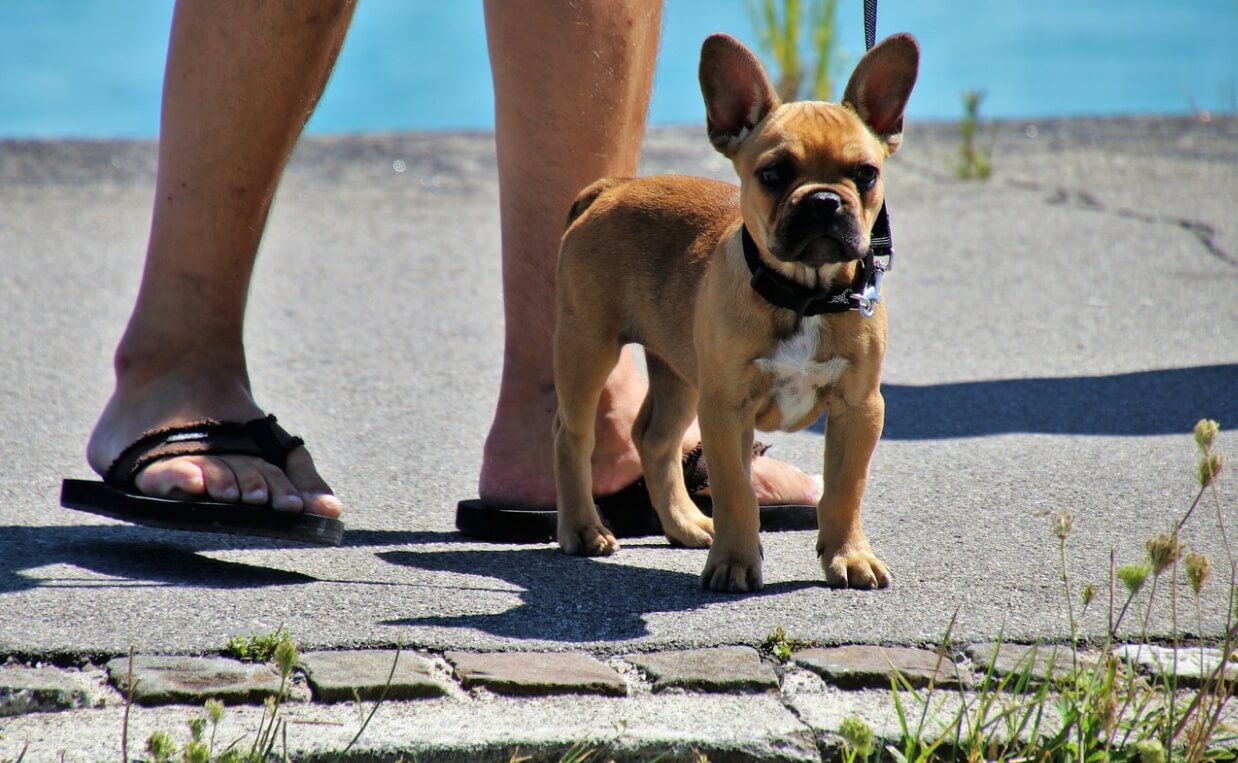
Then teach your pup how to walk on a leash and then how not to pull on the leash. Once your pup has these skills down, you can start going on short walks with few distractions. Eventually, you can go to the park where there are likely lots of other people, dogs and possibly wildlife around, which are huge distractions for a young puppy.
What you don’t want to do is sacrifice all your hard training, for example teaching your dog to have a reliable recall and to listen to you, and then put your pup in a scenario where your pup doesn’t understand what is expected and runs around like a loose cannon. Take the necessary steps to control the situation, help your pup be successful and learn to behave the right way.
When working with your puppy, keep in mind the 3Ds. The 3Ds are things you can usually control. They are:
- Distance
- Distraction
- Duration
For example, you can usually control how close or far away your dog is from other dogs (distance). This is important because while your pup may be able to see all the action going on when other dogs are nearby, you can maintain enough distance so your puppy will still listen to you.
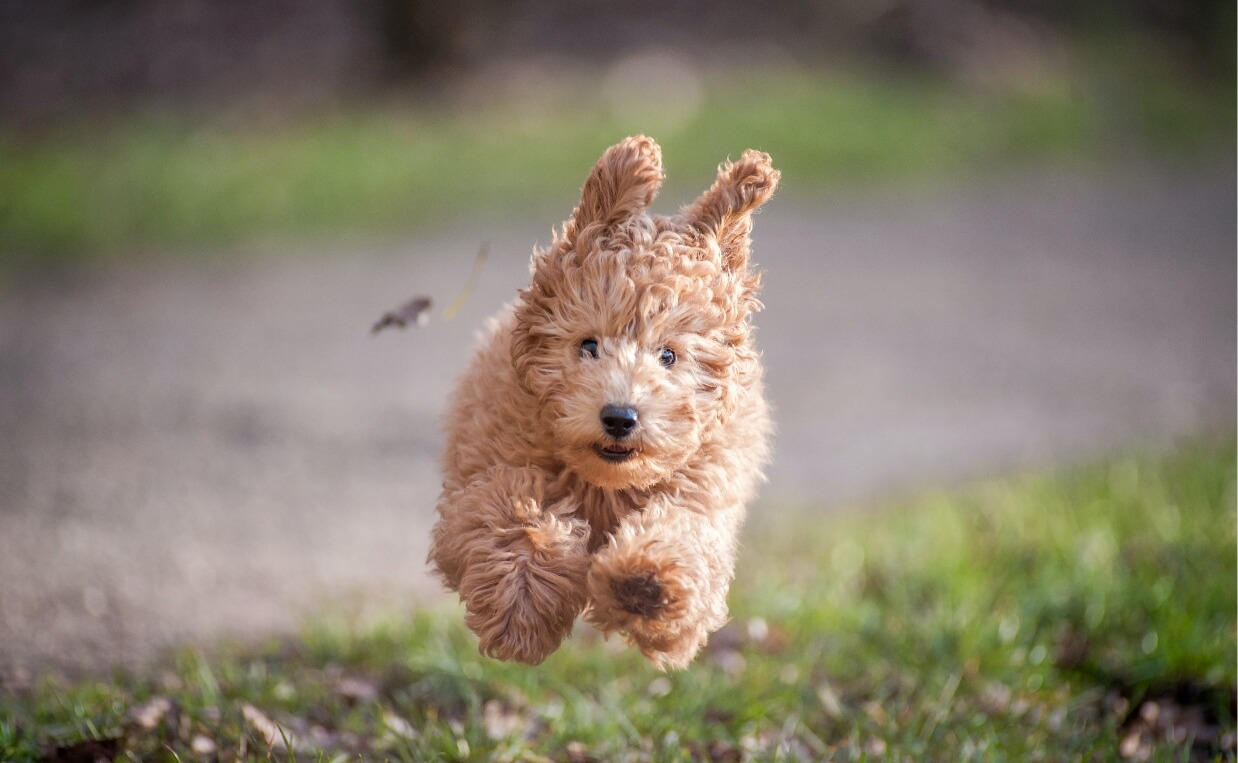
For distraction, try taking your pup to the park for the first time when it’s likely no one or only a few people and dogs will be there. Try to find places where there are few distractions and then work into places where there’s more going on.
Duration is important because, as you know, puppies can get tired pretty quickly. Stop your training session or walk at a time when your pup isn’t overly tired and can still be successful at following the lessons you’ve been working on.
Puppy Training Rule #2. Don’t overuse commands
This is another common mistake new puppy parents make. For example, you’ll be in some other room in the house and you’ll keep calling your puppy to come to you over and over again because he or she isn’t coming to you. This can have a damaging effect on your dog’s training and even your relationship because there is a lack of follow through.
It’s easy to fall into the trap of overusing commands before you’ve taken the time to teach your pup how to respond to the command. Some people are really surprised at how many repetitions it takes before you can use the command in every day life without any teaching involved.
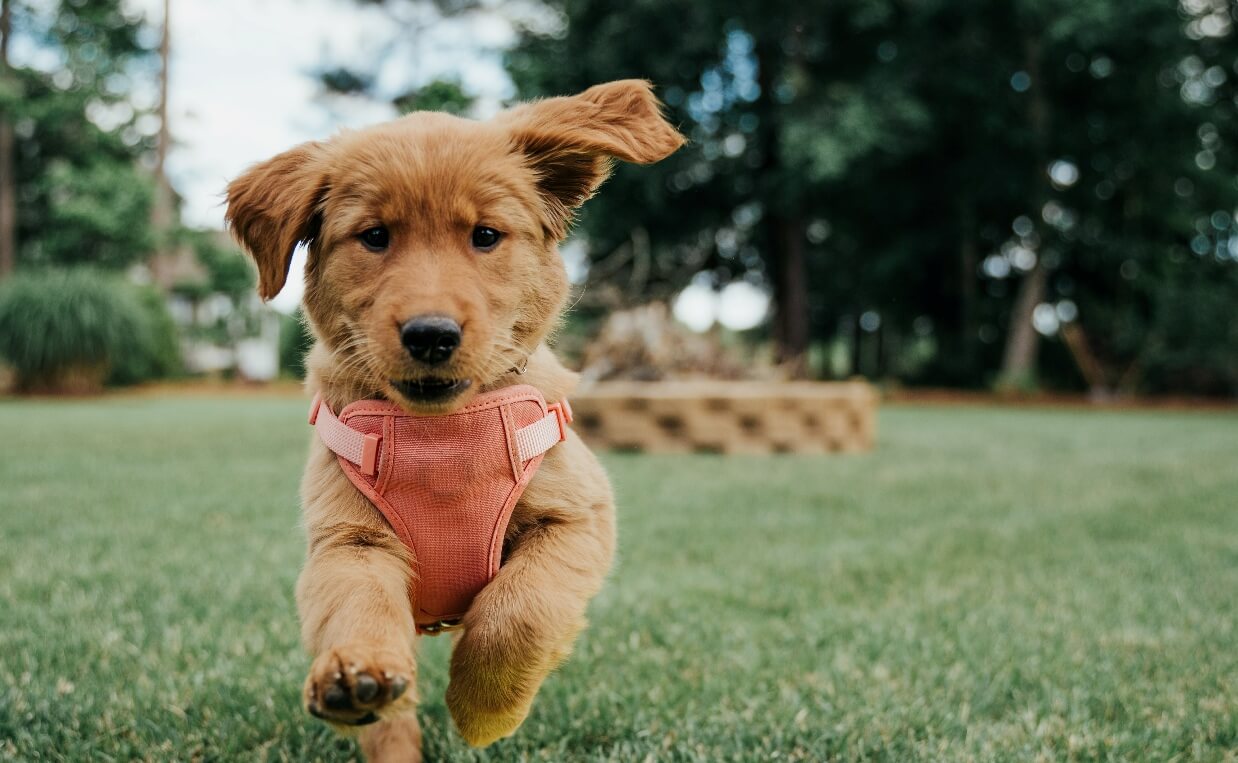
Recall commands or coming when you call your puppy’s name are common commands that shouldn’t be used until you are certain your dog understands what you expect them to do. For example, if you overuse your puppy’s name, your puppy may become desensitized to it and may learn to ignore you when you call his or her name.
When you have a young dog in training, or even an older dog, don’t use a command unless you are sure they know how to follow through, and then make it happen. When you’re in the teaching phase for a command, use a high-value treat to get your dog’s attention and then work on teaching the command. Some dogs are less food motivated and, in that case, try using a toy to motivate your dog to learn the new command.
When your dog becomes a little more trained and reliable as it relates to the new command, you need to be prepared for when you call their name or ask them to follow the command and they decide it’s more important to run away or bark at the neighbor’s dog than respond to the command. If you aren’t prepared to follow through with the command, it becomes easy to get angry or keep repeating yourself. When it gets to that point, the command is going in one puppy ear and out the other and your dog learns to tune you out.
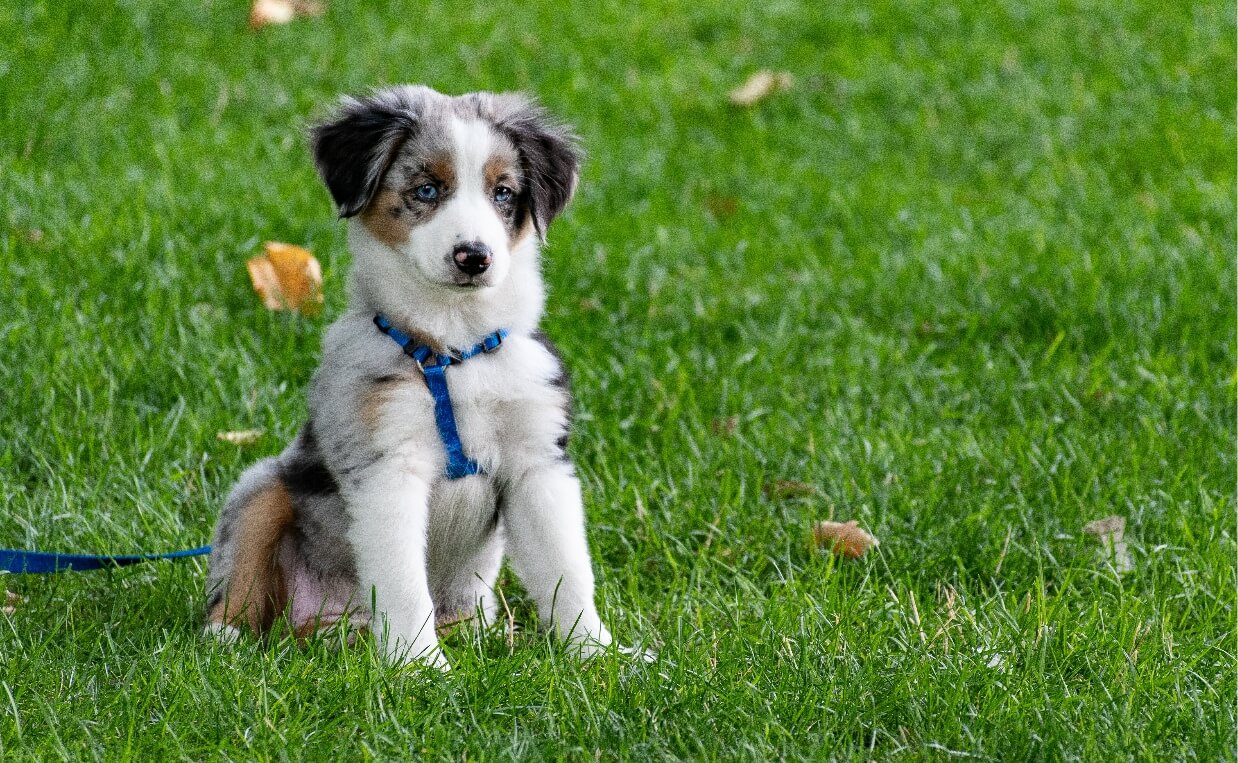
. From there, set your dog up for success by remembering the 3Ds (distance, distraction and duration).
Whatever you do, don’t keep calling your dog over and over and asking your pup to follow a command over and over again because it dilutes what the command means. Plus, if you don’t insist on follow through, it teaches your dog not listening to you is an option.
Puppy Training Rule #3. Practice good puppy management
What does “good puppy management” actually mean? One thing it doesn’t mean is that you run around all day, chasing your puppy and trying to get ahold of him or her whenever they get into trouble. Most puppies’ favorite game is to have you chase and try to catch them, and, as you know, this can absolutely wear you out fast!
Most puppies can be wild and crazy at times. Fun loving, for sure, but pretty wild and crazy. When your puppy is out of their crate and having free time, be sure to keep a lead line on him or her. A puppy lead is a lightweight leash you keep on your pup while they are running around in the house or yard. The lead line makes it easy to catch your pup and interrupt the unwanted behavior and redirect them to a desirable location and/or behavior.
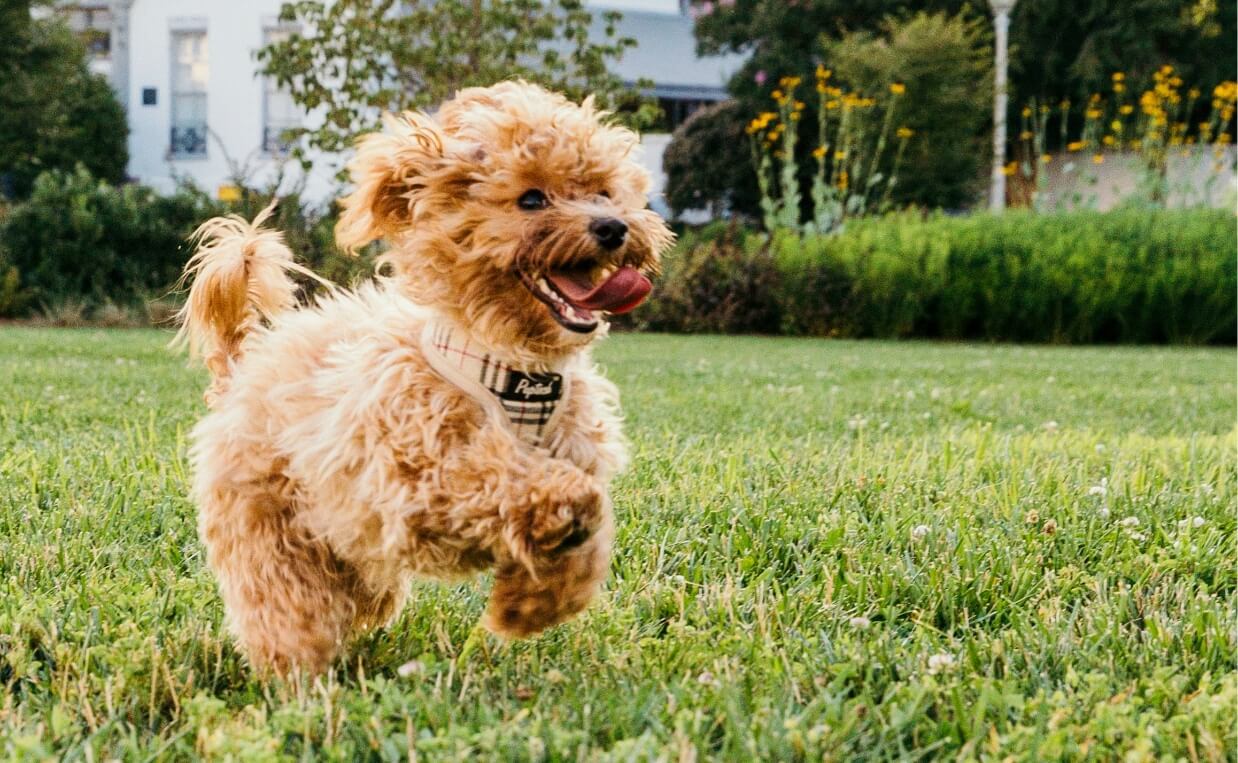
A good way to prepare for proper follow through is to have a leash or line on your puppy so you can lead him/her away from distractions. For example, if your puppy is jumping up and putting his or her paws on the counter to see what you’re cooking for dinner, you can easily grab the lead and redirect him or her. Try teaching your pup to sit instead and teach him or her that’s the behavior you want them to do.
The lead line can certainly be a lifesaver when it comes to dealing with a puppy.
Another management tool is constraining your pup to a certain area of the house. You can use a baby gate to restrict what room your puppy is allowed to go into. Start by keeping your puppy in the same room you’re in so you can supervise. Over time, you can give your puppy access to maybe two rooms, and then three rooms and build up to the whole house when you are confident your puppy knows how to behave properly in the house and can handle the freedom.
What do you do if you can’t supervise 100% of the time? We all have lives; we all have things we need to do. It’s virtually impossible to keep your eyes on your puppy at all times.
So what do you do?
You happily utilize a crate until your puppy is old enough to go to dog daycare, of course. Find a good location for the crate, hopefully in a place where your puppy can see you if possible. You just can’t watch a puppy all of the time. When your puppy is in the crate you know he or she isn’t into mischief, isn’t eating something he or she shouldn’t, or isn’t chewing up your favorite pillow or couch cushion.
Using a crate when you can’t supervise your puppy allows you to spend quality time with your pup when they are out of the crate. Spend time teaching your pup what you want them to do and how you want them to do it.
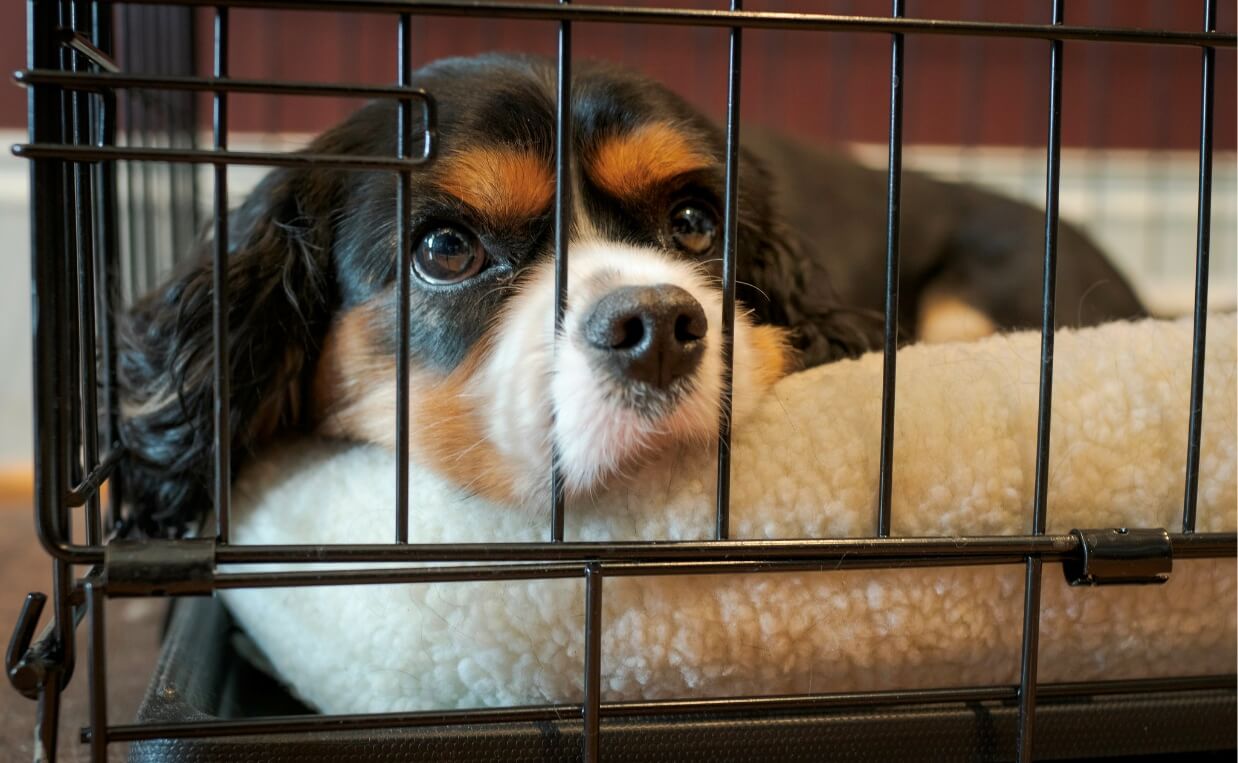
You don’t want to have a Zoom meeting in your office and then come out and discover your pup has destroyed your furniture because he or she wasn’t supervised. The crate is a great way to keep your dog out of mischief until he or she has more training and can be trusted.
And, if you use the crate right, your dog will eventually want time in their crate as a refuge or sanctuary. It becomes a safe, quiet space where your dog can escape over stimulation or scary noises like the vacuum, thunderstorms or fireworks.
Another benefit of using the crate is when it’s time for your puppy to come out, you’re there with them. This teaches your dog you’re the best thing and the most engaging thing in the room. You bring all that’s good. You become the positive, motivating force in your puppy ‘s life.
Puppy Training Rule #4. Be consistent
This is one of the most crucial parts of training your puppy, but maybe the hardest thing for humans. It’s easy to forget to be consistent.
One of the most important things to be consistent about is managing behaviors dogs find self-rewarding.
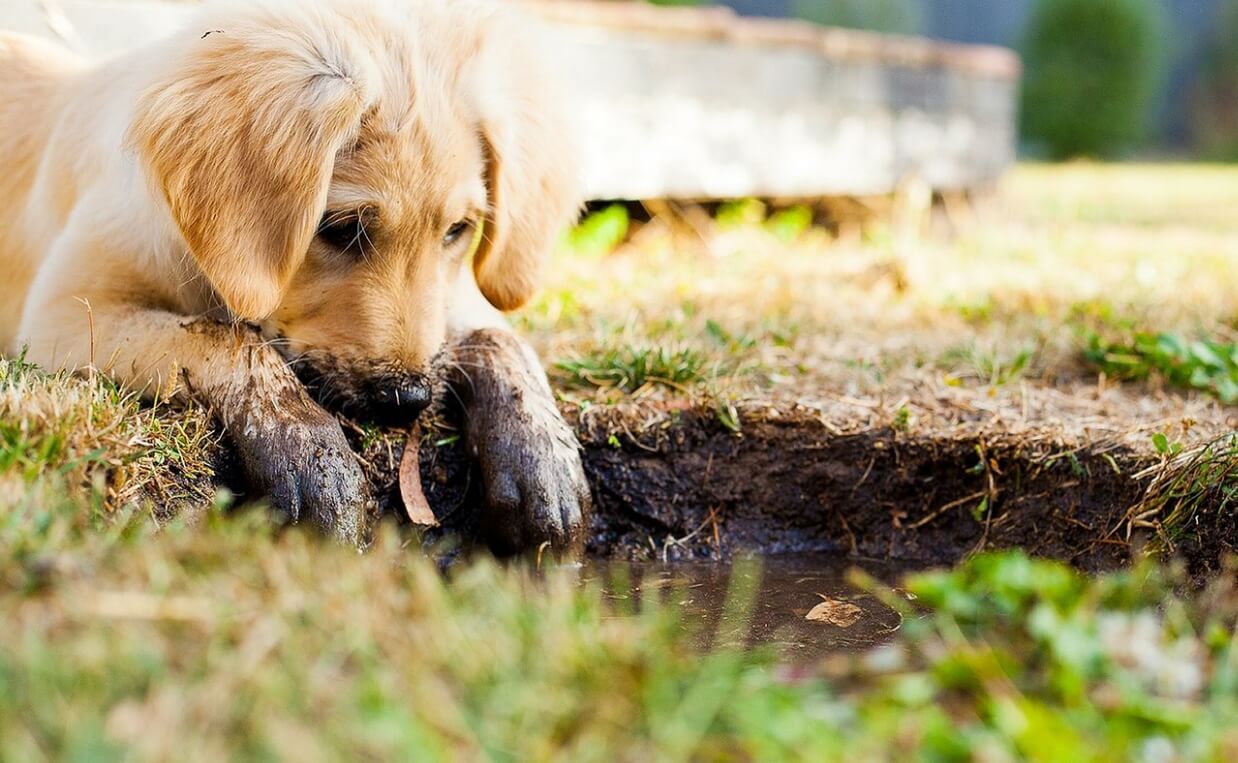
For example, let’s say you have a toy bin on top of your puppy’s crate and your puppy has figured out it’s there. He or she will most likely try to jump up on top of the crate to get to the toys. So whenever you see your puppy headed over to the crate and air scenting, that’s your cue to stop your pup and redirect them. You have to stay consistent about this because if your pup is allowed to steal the toys some of the time, he or she will not learn the bin is off-limits and it will be very difficult to break the habit of your pup jumping up on the crate to get to the toy bin.
Dogs need consistent, clear, specific information. If you establish a rule your pup isn’t allowed to do something, you have to maintain that consistency in order for the rule to be understood and to stick.
When you start your puppy’s life with consistency, it will make it easier for your dog throughout their life because it will be easier for them to learn. Plus, it builds trust because your pup knows you will be consistent with them. And trust is so important when it comes to your relationship with your dog. Just like children, dogs excel when you set high (but reasonable) expectations for your dog and maintain those expectations consistently.
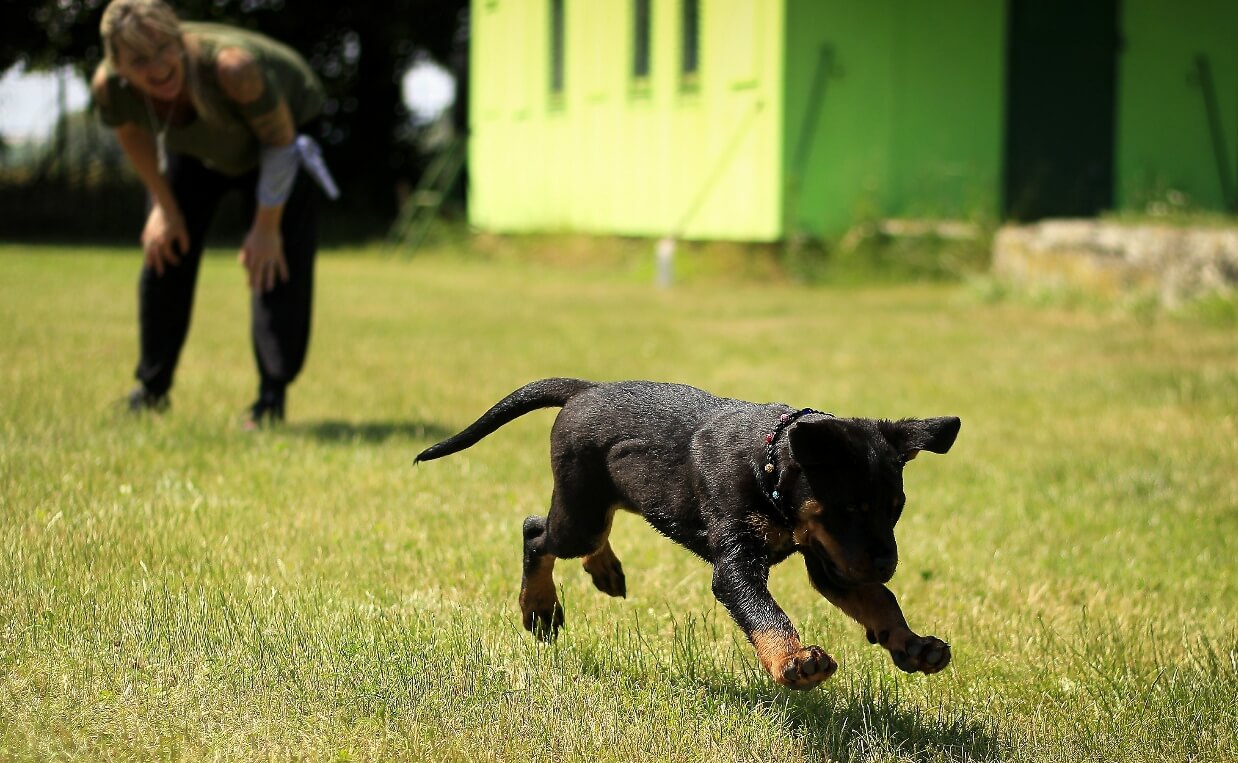
Another tool related to consistency is repetition. Dogs learn through repetition and they learn even better if you use consistent repetition. If there’s a command or skill you’re trying to teach your puppy, practice every day consistently, even if it’s for a short time. Soon, you’ll see progress. If you only do things sometimes, and other times let your pup do whatever they want, you’re not going to see the same type of results. So consistency is massive when it comes to training and working with your puppy.
Just remember to consistently work on the right things – don’t consistently let your puppy do the wrong thing, like drag the toilet paper all over the house day after day (as cute as it may be).
These four rules are just the beginning of caring for a new puppy. For more information, check out these past blog posts:
- New Puppy Checklist: Supplies You Need When Bringing a Puppy Home
- How to Puppy-Proof Your Home
- Should You Feed Your Puppy Adult Dog Food?
- 20 Uncomplicated Do’s and Don’ts for House Training Your Puppy or Dog
- Why It’s Crucial You Start Grooming Your Puppy Early and Regularly
- How to Train Your Puppy to Stop Biting
- 18 Puppy Training Tips to Help You Stay Sane
- 5 Things You Can Easily Forget When Training Your Dog
- 10 Things You Forgot About Raising a Puppy
- Immunizations and Your Dog – What You Need to Know
- 6 Steps to Keep Your Puppy or Dog from Jumping Up
- How to Choose the Best Toys for Your Dog (or Puppy)
- How to Choose the Best Insurance for Your Dog
- What Can a Dog DNA Test Tell You About Your Dog (or Puppy)?
- How to Choose the Best Veterinarian for Your Dog
- How to Choose the Best Dog Daycare for Your Puppy or Dog
Did you follow these four rules when training your new puppy? How well did they work for you? What rules would you add to this list? Please share your thoughts in the comments below…

 Teach Your Dog to Put Their Toys Away: A Fun and Practical Guide
Teach Your Dog to Put Their Toys Away: A Fun and Practical Guide 15 Ways to Enhance Your Dog’s Learning Ability
15 Ways to Enhance Your Dog’s Learning Ability How to Teach Your Dog to Speak with Dog Talking Buttons
How to Teach Your Dog to Speak with Dog Talking Buttons What You Should Know About Our New Dog Obedience Training Program
What You Should Know About Our New Dog Obedience Training Program How to Get Your Dog’s Attention Using the “Watch Me” Command
How to Get Your Dog’s Attention Using the “Watch Me” Command






Leave a Reply